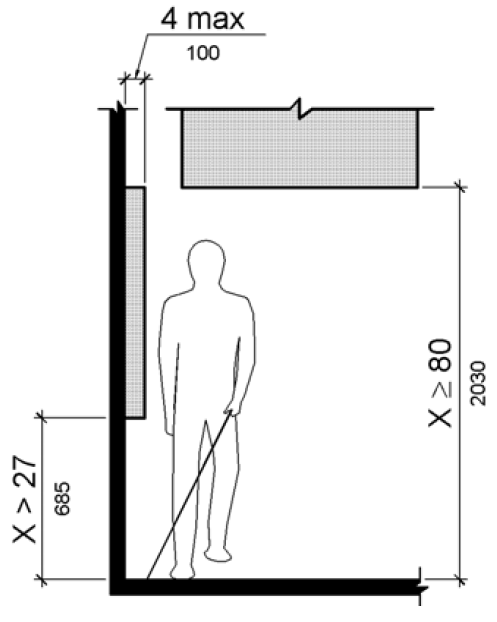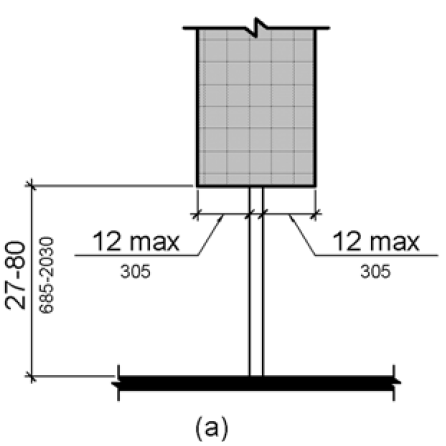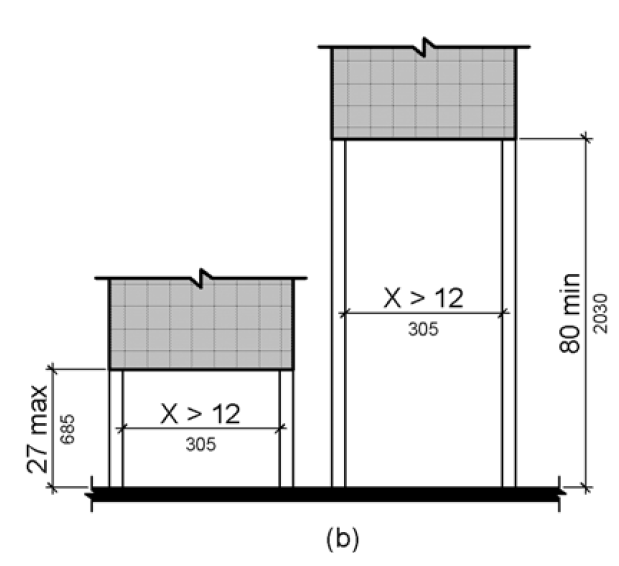2010 ADA Standards for Accessible Design Pocket Guide
307 Protruding Objects
307.1 General.
Protruding objects shall comply with 307.
307.2 Protrusion Limits.
Objects with leading edges more than 27 inches (685 mm) and not more than 80 inches (2030 mm) above the finish floor or ground shall protrude 4 inches (100 mm) maximum horizontally into the circulation path.
EXCEPTION: Handrails shall be permitted to protrude 4½ inches (115 mm) maximum.
Advisory 307.2 Protrusion Limits. When a cane is used and the element is in the detectable range, it gives a person sufficient time to detect the element with the cane before there is body contact. Elements located on circulation paths, including operable elements, must comply with requirements for protruding objects. For example, awnings and their supporting structures cannot reduce the minimum required vertical clearance. Similarly, casement windows, when open, cannot encroach more than 4 inches (100 mm) into circulation paths above 27 inches (685 mm).
Figure 307.2 Limits of Protruding Objects
307.3 Post-Mounted Objects.
Free-standing objects mounted on posts or pylons shall overhang circulation paths 12 inches (305 mm) maximum when located 27 inches (685 mm) minimum and 80 inches (2030 mm) maximum above the finish floor or ground. Where a sign or other obstruction is mounted between posts or pylons and the clear distance between the posts or pylons is greater than 12 inches (305 mm), the lowest edge of such sign or obstruction shall be 27 inches (685 mm) maximum or 80 inches (2030 mm) minimum above the finish floor or ground.
EXCEPTION: The sloping portions of handrails serving stairs and ramps shall not be required to comply with 307.3.
Figure 307.3 Post-Mounted Protruding Objects
307.4 Vertical Clearance.
Vertical clearance shall be 80 inches (2030 mm) high minimum. Guardrails or other barriers shall be provided where the vertical clearance is less than 80 inches (2030 mm) high. The leading edge of such guardrail or barrier shall be located 27 inches (685 mm) maximum above the finish floor or ground.
EXCEPTION: Door closers and door stops shall be permitted to be 78 inches (1980 mm) minimum above the finish floor or ground.
Figure 307.4 Vertical Clearance
307.5 Required Clear Width.
Protruding objects shall not reduce the clear width required for accessible routes.





User Comments/Questions
Add Comment/Question